
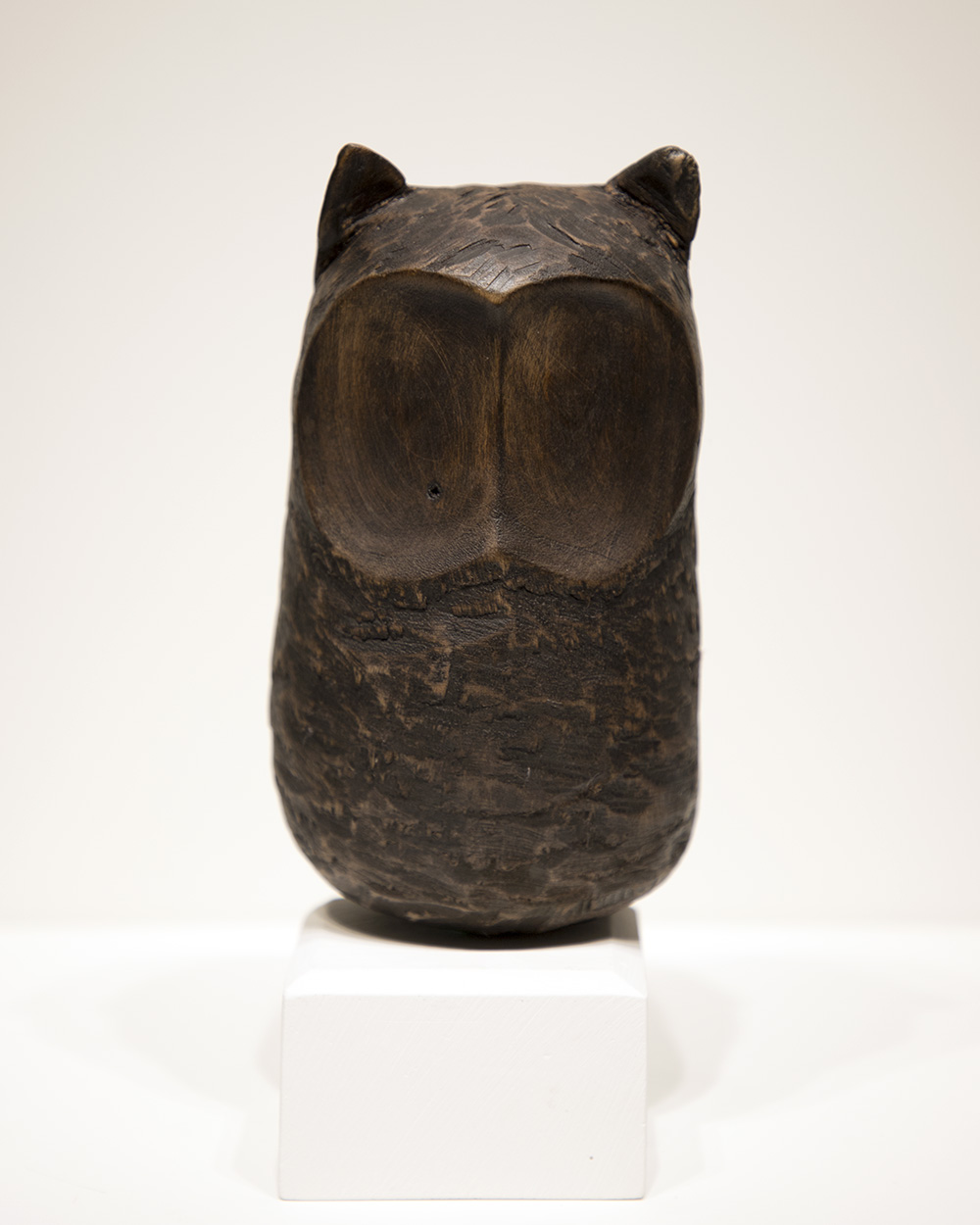
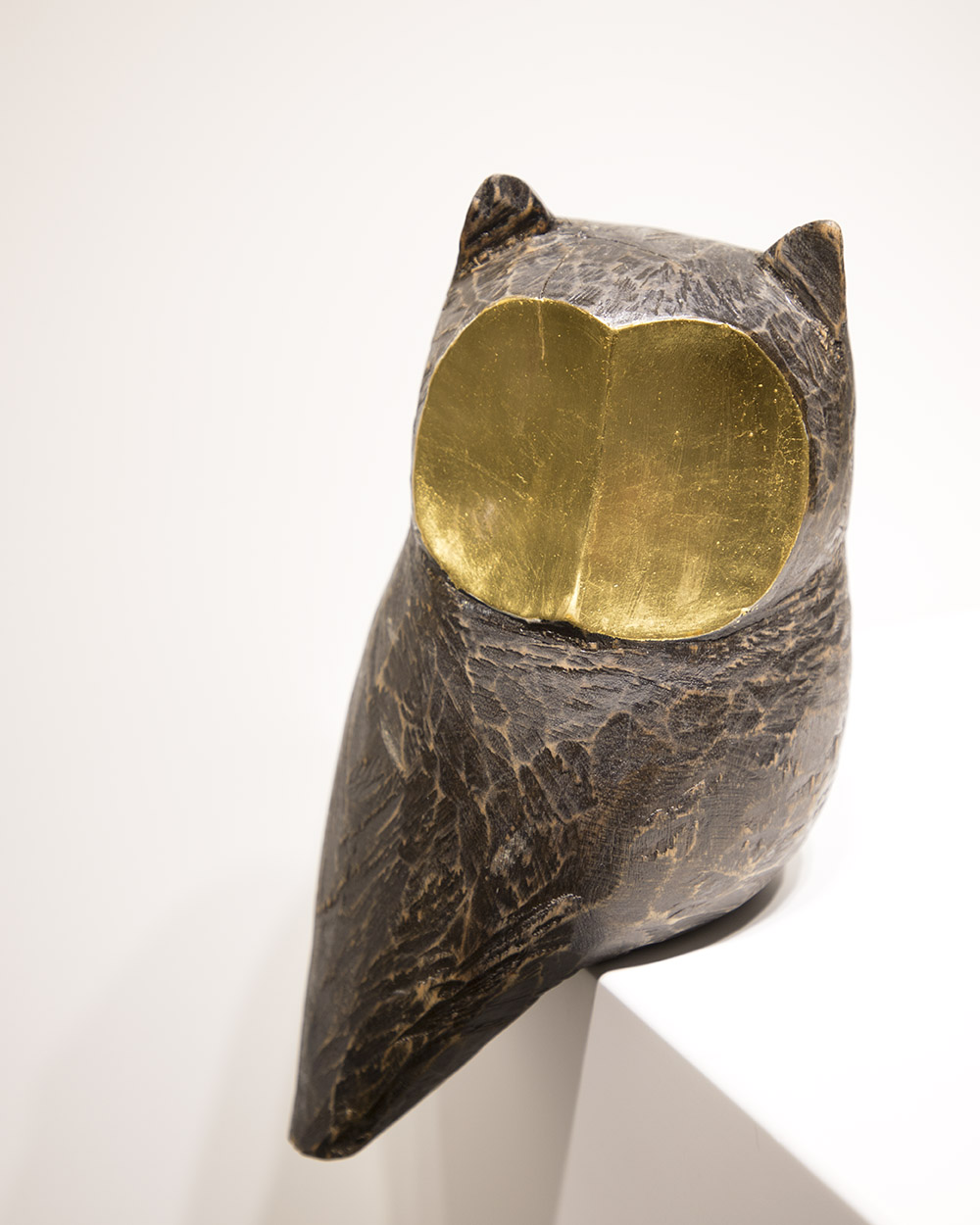
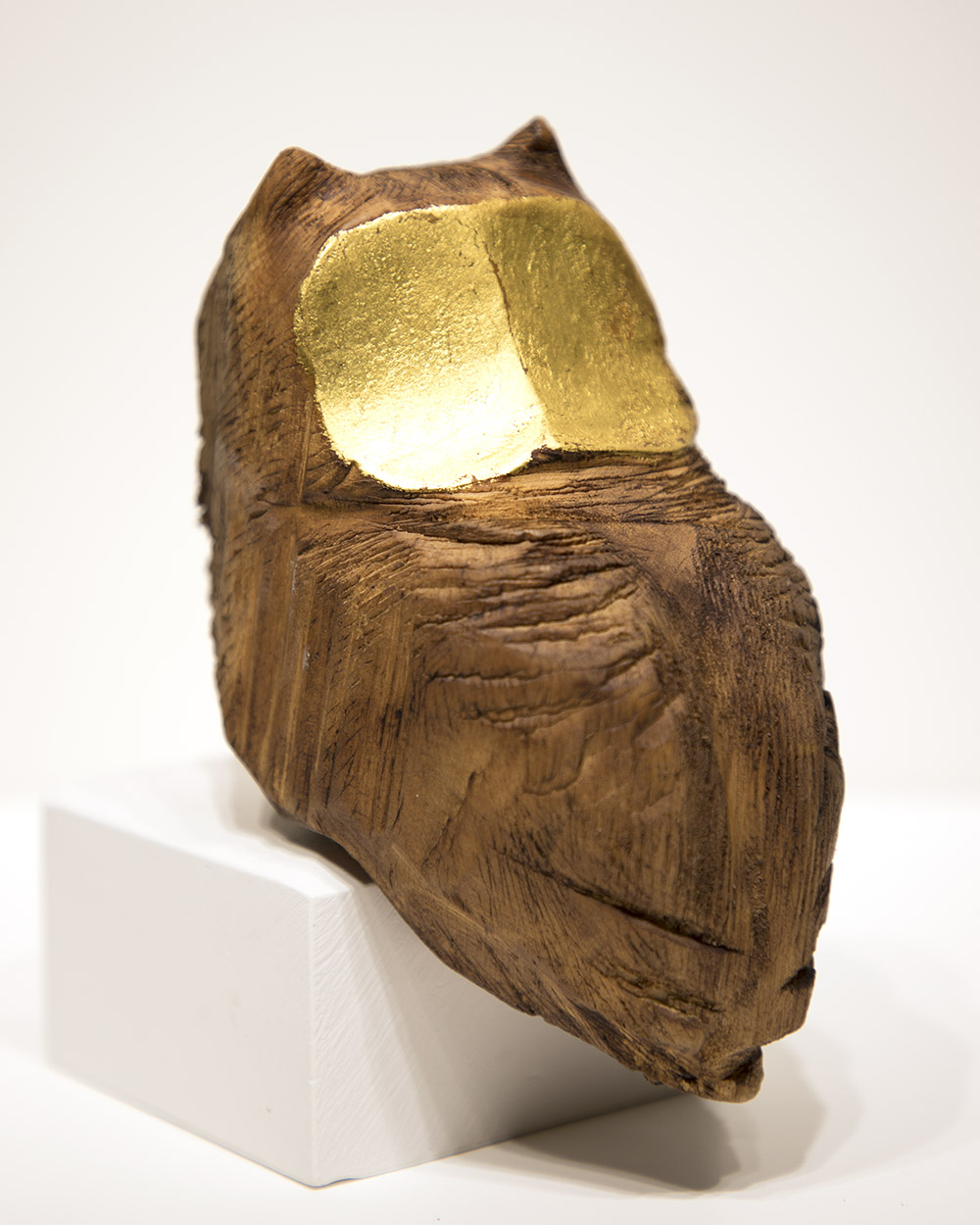

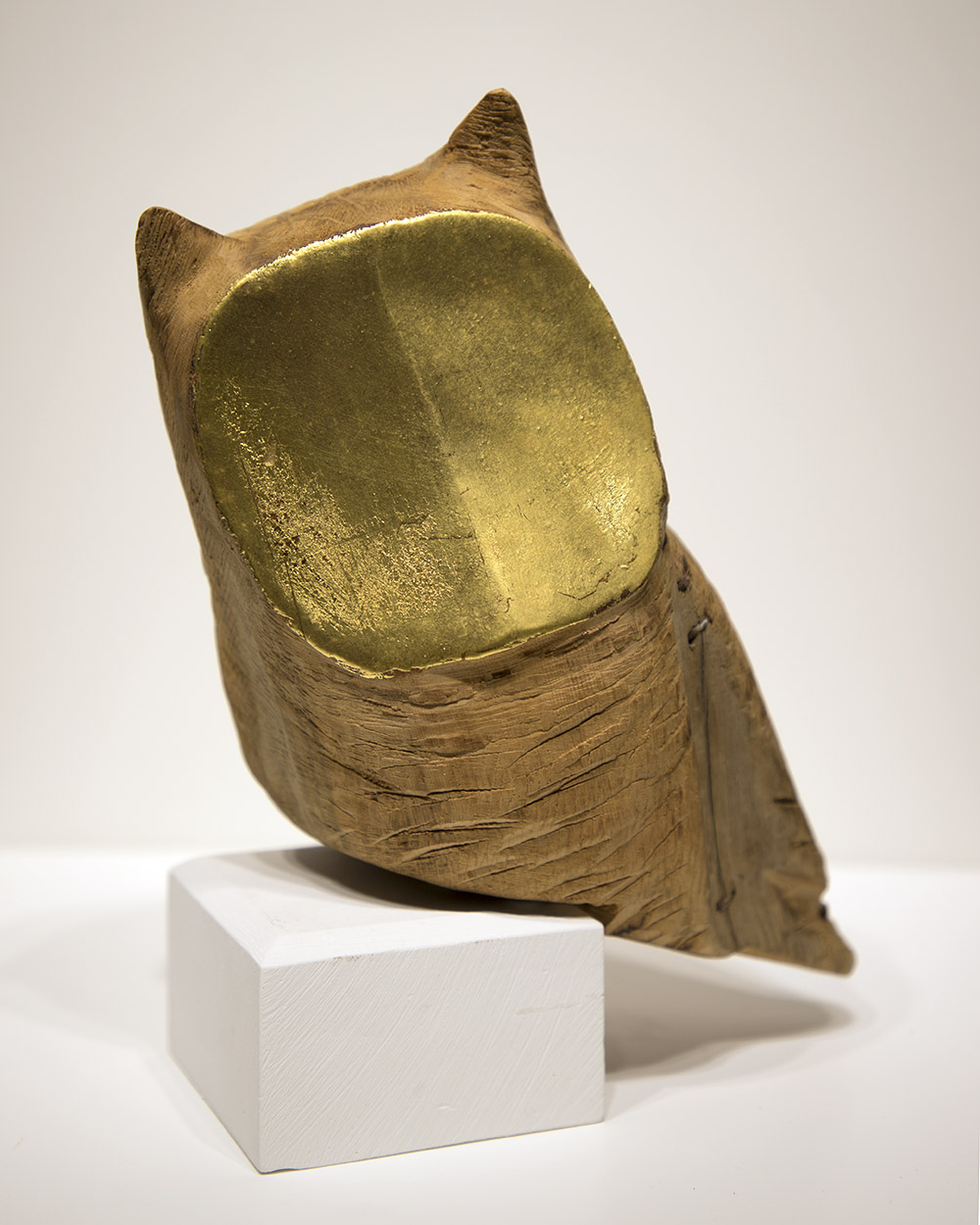
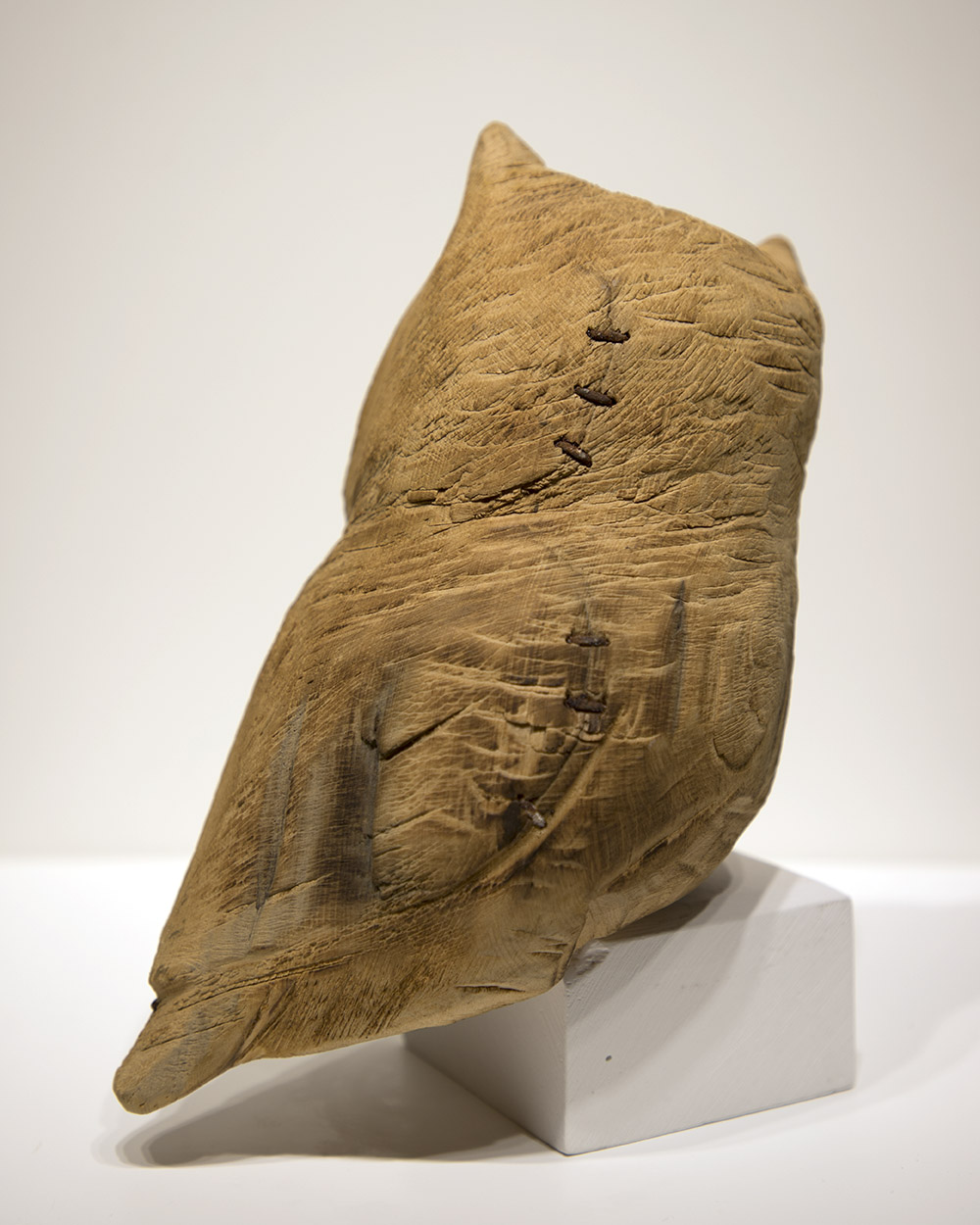
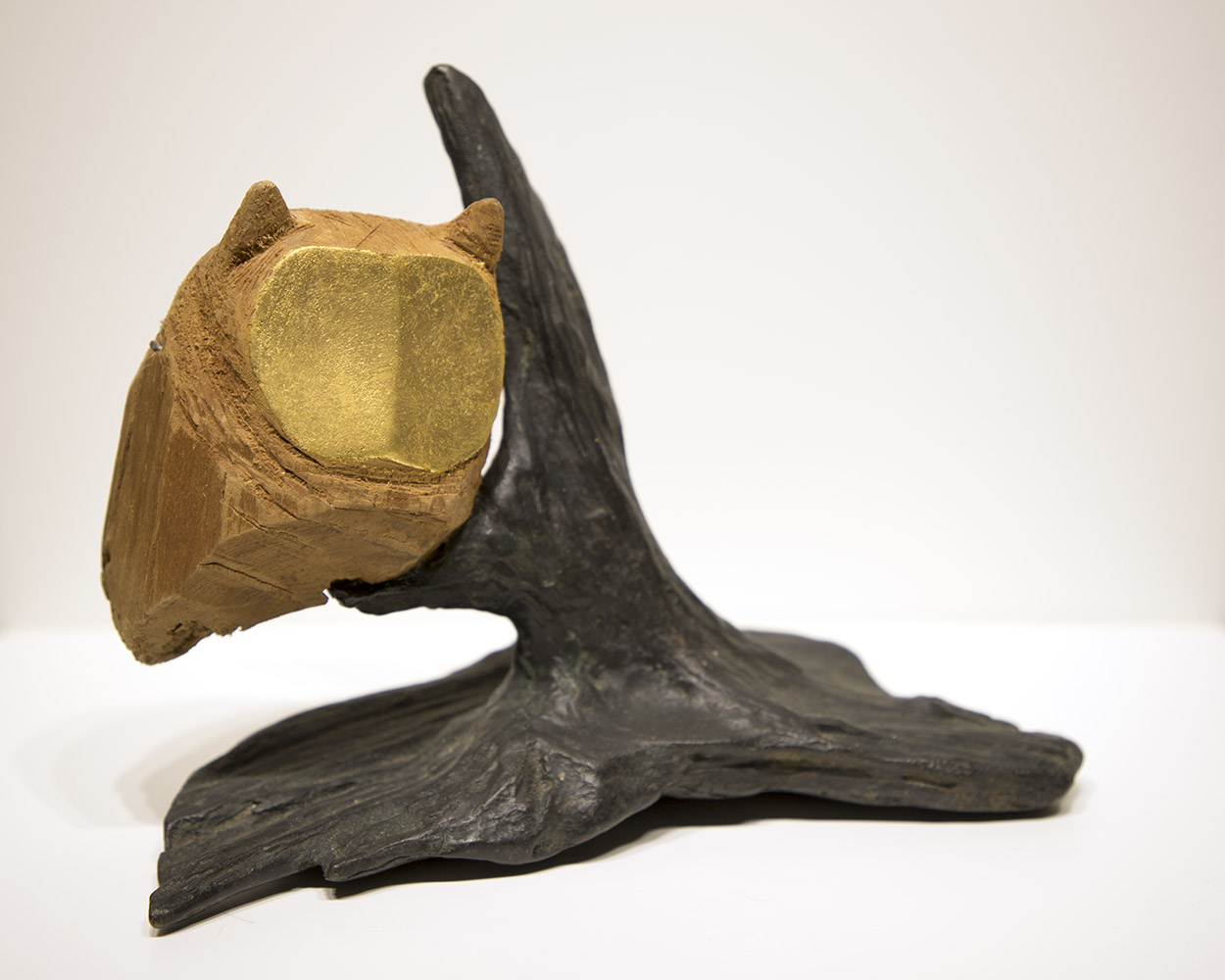
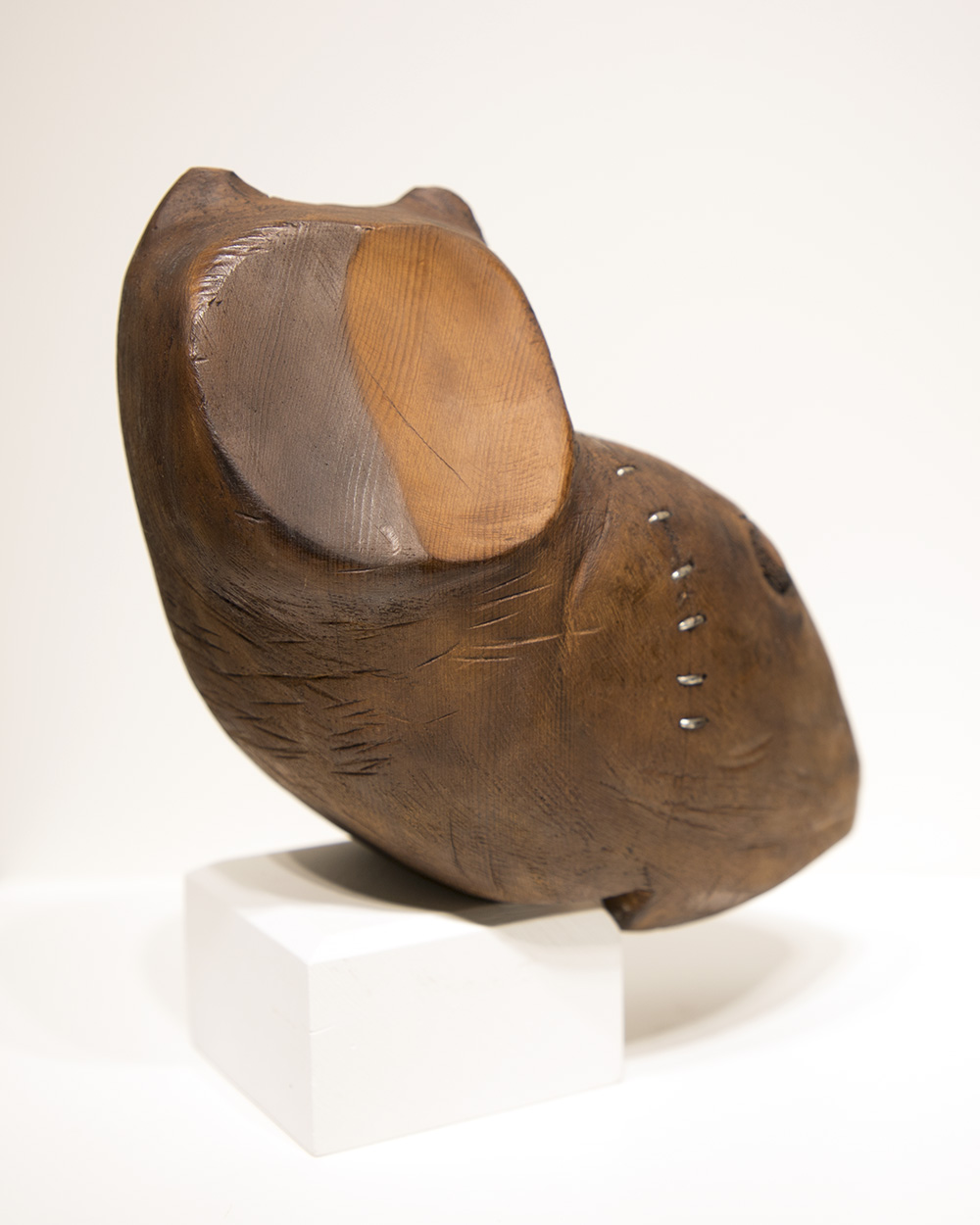
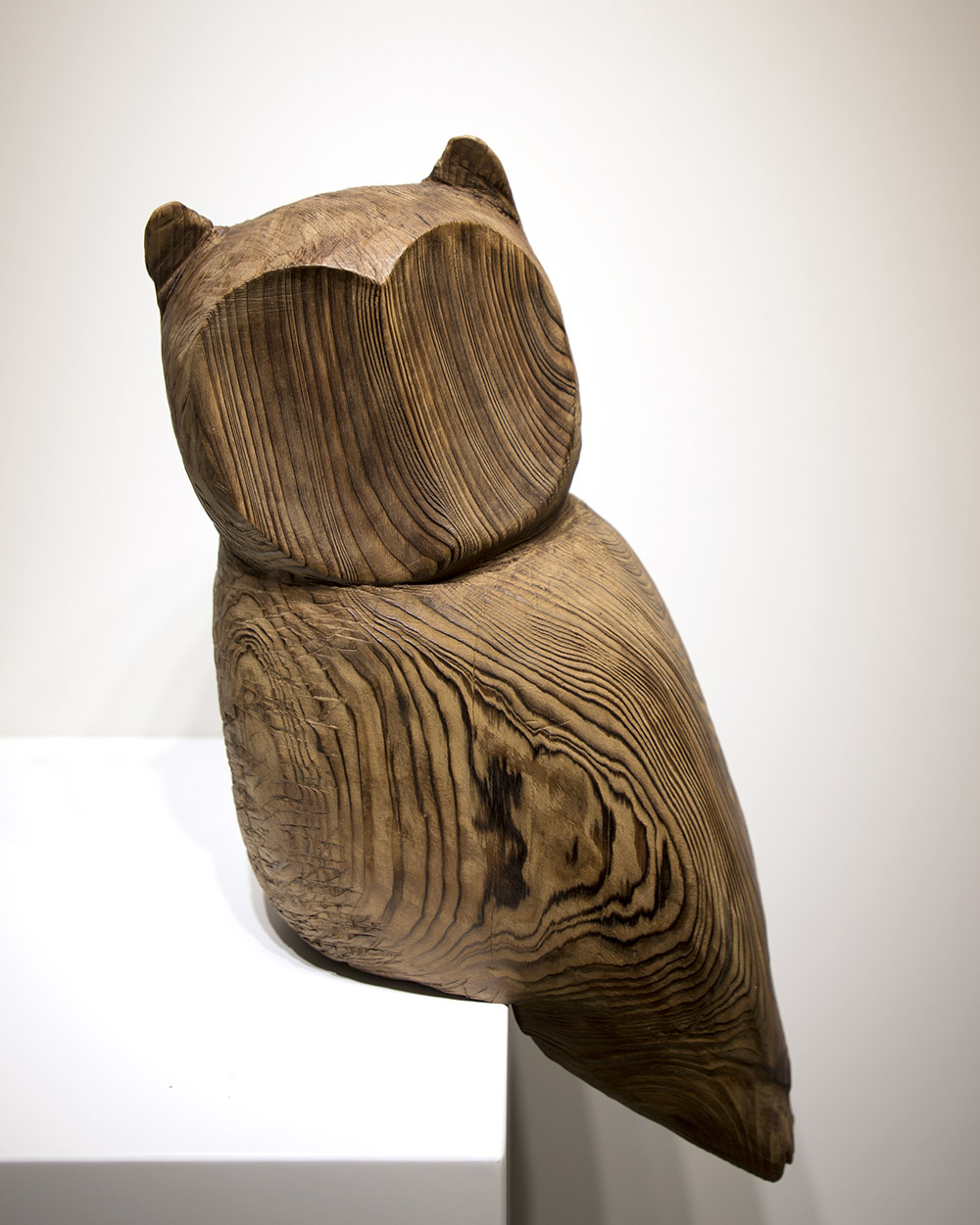










Born in 1962 in Taitung, on the southeastern tip of Taiwan, Chen Hsin-min moved up north upon graduating junior high school to become a wood carving apprentice. In Taipei, Chen came under the apprenticeship of the sculptor Hsiao Yi (1956 – 2006), who taught him traditional carving of the Buddhist tradition. During this time, Hsiao Yi had already developed a Modern style, but accepted commissions of traditional themes to sustain a living. Under Hsiao’s tutelage, Chen Hsin-min, in addition to traditional wood carvings, also began to experiment with a Modern and personal style.
Chen Hsin-min formally apprenticed under Hsiao Yi for five years, before serving in the mandatory military service, and have maintained a close relationship ever since. Introduced by Hsiao Yi, Chen Hsin-min came under the tutelage of Hsiao Chang-cheng (Hsiao Jon-jen), who had then returned to Taiwan from studying aboard in Paris. Under the guidance of the sculptor Ju Ming (Zhu Ming), Hsiao Chang-cheng worked as the art director of the Chin Bao Shan Group, with Chen Hsin-min as his assistant. Responsible for the stone carving and wood carving of the sculpture park, Chen Hsin-min moved to coastal town of jinshan, north of Taipei, to work full time for the park, and became friends with many Modern artists, including Ju Ming, Wang Pai Lu, Yu Peng, Cheng Tsai-tung (Zheng Zaidong), and Kan Tan. Along with Hsiao Chang-cheng and former teacher Hsiao-yi, the group of artists, all based throughout the northern Taipei area, which is geographically shaped by two rivers, became loosely known as the Two Rivers Group.
In 1993 Chen Hsin-min participated in the third Two Rivers Group Exhibition in Taipei. Of the five wood carvings of semi-abstract animals, such as owls and chickens, four were sold. Encouraged by the great reception the exhibition, Chen Hsin-min began focusing in his Modern style, and began regularly participating in the Two Rivers Group exhibitions in galleries throughout Taiwan, including the 2005 exhibition at Lin and Geng Gallery in Taipei.
Chen Hsin-min’s creativity comes from a childhood spent in nature, spending a great deal of time in the forest and encountering wild animals, especially owls. The unique appearance of the owl captured his imagination. In his art, either working with stone or wood, Chen allows the material to speak for itself as much as possible. Following each incision, he allows his blade to follow the nature veins of the material, and often the overall shape of the sculpture is dictated by the material’s natural shape. For certain pieces, the face of the animal is kept bare, allowing the natural grains of the wood to shine through, while in others, gold leaf or gold paint is applied to create an unique look. As for the bird’s body, Chen carves the wood with corse and blunt cuts, creating a texture reminiscent of feathers. Chen calls this carving technique the kitchen knife. The inspiration behind the series Rock, Life, Tree comes from sharpening his blades on a whetstone, during which he observed the waves pattern let on the whetstone, like the rings on a tree. The series was then named by Richard MC Chang as Rock, Life, Tree.
Early in his career, Chen Hsin-min worked primarily with driftwood, sourced directly from the ocean. Later Chen worked with repurposed camphor or cypress from dismantled buildings, especially the beams and pillars of temples. Similarly, his stones are gathered from riverbanks or shorelines. Chen’s creativity comes from nature, his source of materials comes from nature, and his art is a product of nature.
